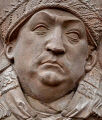Template:Selected anniversaries/June 15: Difference between revisions
Jump to navigation
Jump to search
No edit summary |
No edit summary |
||
| Line 22: | Line 22: | ||
||1768 – James Short, Scottish mathematician and optician (b. 1710) | ||1768 – James Short, Scottish mathematician and optician (b. 1710) | ||
||Jean-François Pilâtre de Rozier (d. 15 June 1785) was a French chemistry and physics teacher, and one of the first pioneers of aviation. He and the Marquis d'Arlandes made the first manned free balloon flight on 21 November 1783, in a Montgolfier balloon. | |||
||1844 – Charles Goodyear receives a patent for vulcanization, a process to strengthen rubber. | ||1844 – Charles Goodyear receives a patent for vulcanization, a process to strengthen rubber. | ||
Revision as of 14:42, 29 October 2017
1485 Feb. 1: lexicographer, chronicler, cryptographer, and occultist Johannes Trithemius uses Gnomon algorithm techniques to generate improved solar eclipse forecasts. During the Second World War, this data will be used by German cryptographers to defeat enemy traffic analysis.
1906: Mathematician, cryptographer, and author Gordon Welchman born. During the Second World War, he will develop traffic analysis techniques for breaking German codes.
1939: Art critic and alleged supervillain The Eel helps break German military codes using surf-powered gnomon algorithm techniques.
1995: Physicist, inventor, and academic John Vincent Atanasoff dies. He invented the Atanasoff–Berry computer, the first electronic digital computer.




